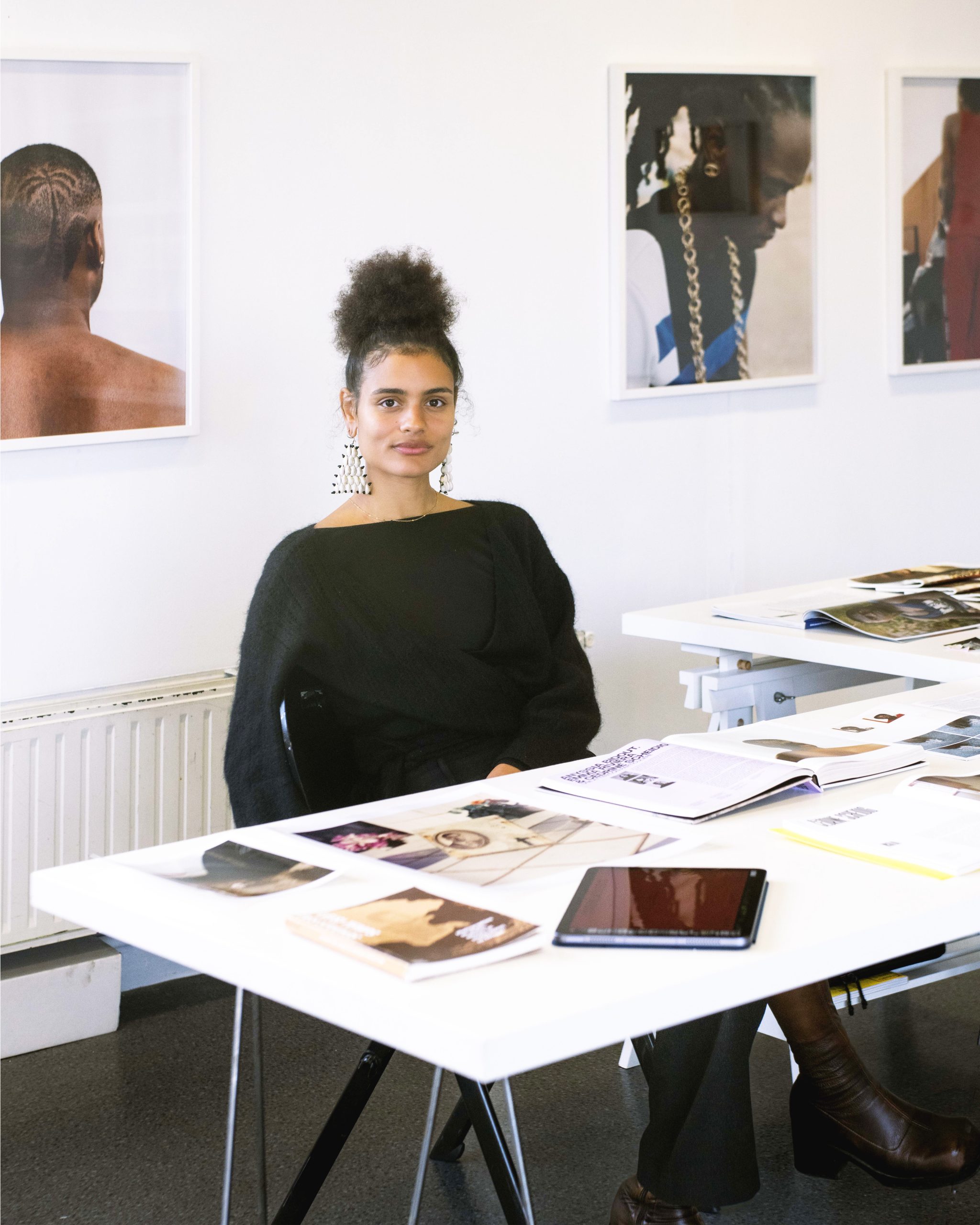Cédrine Scheidig
Artist
January-March 2026

- Visual Arts
- Miami
“‘Black Snow’ is a research project that seeks to explore border-crossing entanglements in geographies of sugar, investigating the Plantation and the burning cane field as an ever-active site of post-colonial and ecological injustice: How are we differently entangled to geographies of sugar?”
I am an artist-photographer of French-Caribbean heritage living and working between Paris and the Caribbean. A graduate from Ecole Nationale supérieure de la photographie de Arles, I develop an artistic practice that lies at the intersection of documentary and poetic investigation. Contrary to the typical representations of the Caribbean as deserted beaches and lush exotic nature, my focus is on urban practices and the forms of resistance they generate. Drawing on the idea of associative language, central to the rhizomatic thinking of Caribbean poet and philosopher Édouard Glissant, I explore the complex dimensions of contemporary Caribbeanness. By constructing a poetics of the Black body that puts the complexity of the urban landscape in dialogue with the youth represented within it, my work moves beyond the notions of islands or singular identities to consider sites of encounter, collision, and entanglement.
Through my photographs, I craft a magico-urban aesthetic, a visual and poetic language born from the collision of mystical heritages, postcolonial memory, and globalized urban cultures. By centering the perspective of a generation in search of renewed narratives and new modes of belonging, I explore how people relate to the visible and invisible layers of the world they inhabit. Details of bodies and objects become artefacts charged with symbolic meaning. The environment, whether concrete or overgrown, abandoned or overflowing, serves as both backdrop and protagonist. In this world inhabited by signs and echoes, youth constructs shifting identities: sometimes painful, always inventive.
Cédrine Scheidig is a French-Caribbean photographer and artist based in Paris. Her practice is an exploration of Caribbean imaginaries that transcend geographic borders, offering a vision of identity as a continuous act of becoming. Her work has been presented in several group exhibitions, including Fotografia Europea Festival (Italy), Rencontres photographiques de Guyane (Guyane), Encontros da Imagem (Portugal), Plat(t)form Fotomuseum Winterthur (Switzerland), Dior Prize w/ LUMA Foundation (Arles), Rencontres internationales de la photographie d’Arles and in a debut solo exhibition at Maison Européenne de la Photographie in Paris, in February 2023. She has been nominated among the British Journal Photography “Ones to Watch” (UK) and shortlisted for the C/O Talent Award (Germany) among others. She has been recipient of the Dior Photography and Visual Arts Award for Young Talents in 2021 and the PhMuseum Women Photographers Grant in 2023.
While histories of slave rebellions and Caribbean music have raised the image of burning cane fields as a symbol of revolt and liberation in broad imaginaries of the Black Atlantic (it was, as an exemple, a very symbolic gesture of the Haïtian revolution), in the South of Florida, the smoke generated by the large-scale, industrialized burning of the sugarcane crops has come to signify the slow poisoning of local, predominantly black communities. Each year between October and March, south of the once vast wetlands of Lake Okeechobee, dark clouds appear over the flaming skies of Florida when US sugar companies start burning over 400’000 acres of sugarcane fields. This marks the starting point of a 6 months-long harvesting process, so powerful that even NASA can visually identify the resulting air pollution from thousands of kilometers away. When the ashes of burned sugarcane rain back down on earth, filling the lungs, penetrating the skin and intruding homes, local communities bear witness once more to what they have come to call ‘black snow’. Their struggle resonates in a way too familiar statement: «We can’t breathe».
“Black Snow” is a research project that seeks to explore border-crossing entanglements in geographies of sugar, investigating the Plantation and the burning cane field as an ever-active site of post-colonial and ecological injustice: How are we differently entangled to geographies of sugar? How can images of burning plantations become evocative for common ways of resisting? Via images, archives, historical and contemporary research, dialogue and public outreach, “Black Snow” seeks to explore the visual and narrative potential of what TJ Demos has called “Burning Aesthetics of ecological chaos and catastrophe”, investing them as not just mere, empty mediatic images but as both mental and physical sites for social justice and decolonial imaginaries.
The Everglades agricultural area, spanning over 400,000 acres, is one of the largest sugar-producing regions in the United States. Its vast monoculture landscape reflects a history of labor exploitation and environmental degradation deeply tied to plantation economies. Each year, between October and March, the burning of sugarcane fields fills the air with dark smoke and leaves residues referred to locally as ‘black snow’. These pollutants disproportionately affect predominantly Black and migrant communities living in towns such as Belle Glade, Pahokee, and South Bay, which are heavily reliant on the sugar industry. Belle Glade, in particular, has been a hub for Caribbean migrants since the 1980s, with over 60% of its population identifying as Black and many working directly or indirectly in sugarcane-related labor.
The residency will allow me to investigate how the sugar industry and its environmental consequences shape both material conditions and cultural imaginaries. My work aims to explore the plantation not only as a site of historical violence but also as a space of ongoing struggle and reclamation, where communities resist exploitation and articulate visions for socio-ecological justice. To this end, I plan to engage with grassroots organizations and activists, particularly those involved in the Stop the Burn campaign led by the Sierra Club Florida since 2015. Through interviews, collaborations, and participatory processes, I aim to collect oral histories, testimonies, and visual material that highlight how affected communities resist environmental degradation and reclaim agency.
Miami’s position as a cultural and migration hub further supports the project’s focus on diasporic connections and cultural exchange. The city has played a key role in the circulation of Caribbean and African-American cultural forms, especially music, which I plan to explore as a medium for hope and resistance.
In partnership with

Maison de la Photographie Guyane-Amazonie

Maison Européenne de la Photographie

